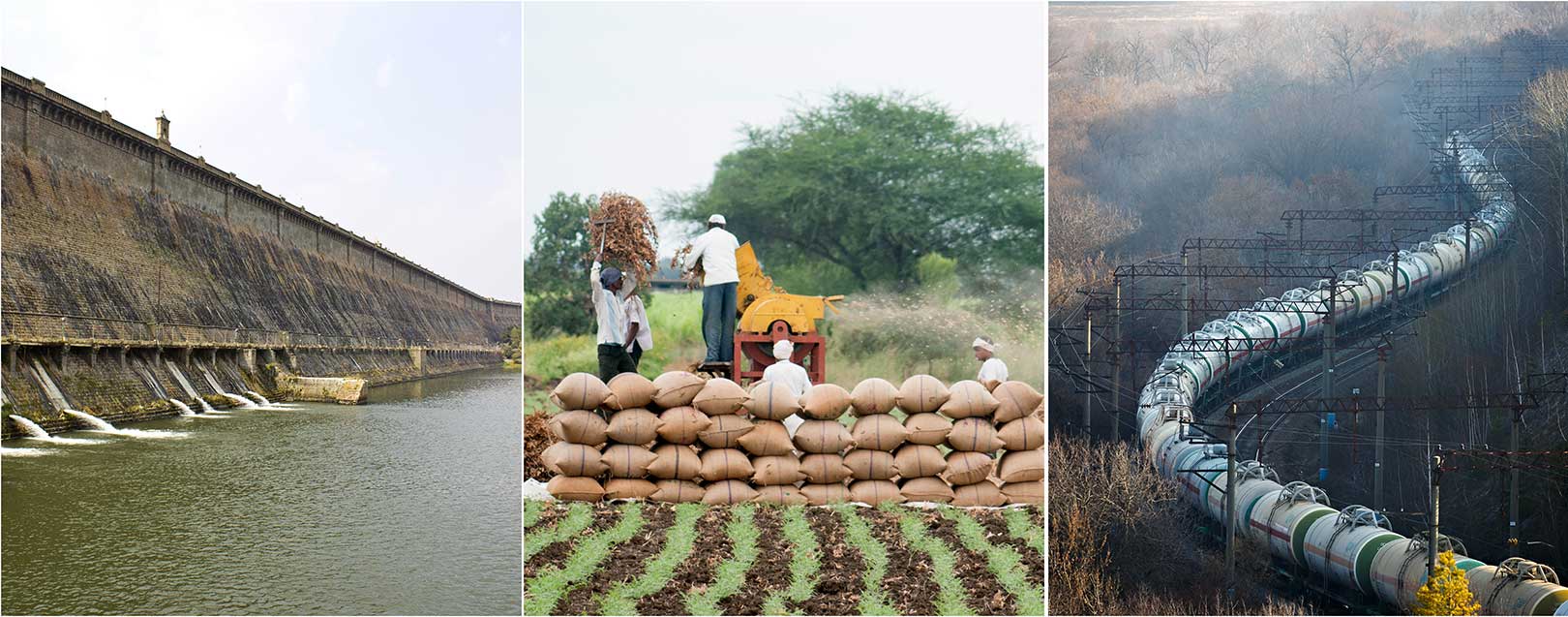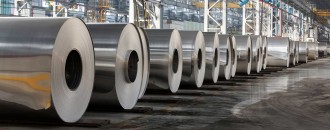
Food grain production exceeds target though drought conditions loom in South
By Abin Daya
Summer is fully and truly here, and we are burning! Mercury has breached the 40 degree mark and there is no sign of rains. Personal discomfort notwithstanding, summer also impacts an economy like India, which is still influenced by agriculture and the rains that drive cropping patterns.
The reservoirs are running near to empty, particularly in South India, and with one more month to go before the normal start date of the monsoons, the pain is not over yet. Supply of drinking water and for household purposes is already affected significantly, apart from the impact on power generation and irrigation.
However, East and Central India have been relatively better off, and agricultural activities in these regions have also benefited from the near normal monsoon last year. India is looking at a record food grain harvest in this crop year, and pulses have played a major role with a 35% increase in production, as against 8% increase in overall food grain production. The record harvest has come with its set of problems including lower realisation for farmers, and the government is considering various measures to support the producers.
While food grain production exceeded targets, crude and natural gas production failed to meet targets for the year. Infrastructure issues, natural run off of existing fields, etc. have affected major producers such as ONGC and Oil India Ltd. However, the increase in consumption of petro products has led to higher volumes of crude being processed by refiners, most of it imported.
Finally, talking about another sector which is now on the recovery path, Indian steel industry has firmly established its high growth levels compared to other major producers and the global industry as a whole. We are well on the way to unseat Japan as the second largest producer, and 2017 should be the year that we see that happening. The government’s infra push should give a much-needed fillip to domestic consumption, and combined with a drop in imports, this should help this core industry grow to take its rightful place.
Drought conditions worsen
- Reservoir levels at major reservoirs across India have come down significantly under the onslaught of drought like situation in most parts of the country
- Reservoirs across the country have 42.66bn cubic metres (BCM) of storage, which is 27% of total capacity of 157.80BCM
- Against this, reservoirs had storage of 34.2BCM or 22% of overall capacity during same time last year

- Worst affected is South India, which has just about 10% of capacity as storage currently, against 14% during same time last year
- In absolute terms, this translates to 4.95BCM storage against a capacity of 51.59BCM, the highest amongst five regions
- Reservoirs in the South utilise the storage for power generation as well as irrigation, and this accounts for the higher levels of capacity in the region
- East India is in a much better position than others, with storage at 44% of capacity, as against 30% during same time last year, and against a 10 year average of 29%
- Similar is the case with Central India, comprising of UP, UK, MP and Chhattisgarh, where storage levels are at 38% of capacity against 28% last year
- With reservoir levels dipping dangerously low, many parts of South India are already experiencing severe water shortage and power blackouts
- In the event monsoon gets delayed, or is below normal this year, industrial and commercial activity in the South region is bound to get affected significantly
Crude and natural gas productions fall short of targets
- Production of crude oil fell marginally short of annual targets during FY17 to hit 36.01Mn tonnes, as against targeted production of 37.09Mn tonnes (97.1%)
- Production numbers for the current year were also lesser by 2.5% compared to the actuals for FY16 of 36.94Mn tonnes

- The largest crude producer, ONGC, suffered a shortfall of 2.41% in production, against targets and 0.63% shortfall against last year numbers
- Production by Oil India Ltd at 3.26Mn tonnes was 6.38% lower than target, but 0.99% higher than last year’s production
- Natural gas production was marginally less than last year’s production at 31.9Mn tonnes, as against last year’s production of 32.25Mn tonnes
- Achievement against targeted numbers was, however, with only 93.5% of the production target being met
- Infrastructure issues, and natural declines of existing oil fields led to a 2.9% under-achievement against target for ONGC
- Indian refiners processed 245.37Mn tonnes of crude during FY17, as against 232.86Mn tonnes processed in the previous FY
Food grain production exceeds target
- The country’s food grain production is expected to exceed the target and hit a record 271.98 mn tonnes during the current crop year (July to June)
- Food grain production had hit a record high of 265.04 mn tonnes in crop year 2013-14 on the back of record Rabi harvest of 136.35Mn tonnes
- The Government had set a production target of 270Mn tonnes during the current crop year, against 2015-16 numbers of 251.57Mn tonnes – an increase of 7.37%

- Supported by the forecast of a ‘Normal’ South-West monsoon, the government is looking to set record grain production targets for the 2017-18 Crop Year at 273Mn tonnes
- Boosting crop yields with supply of quality seeds and ensuring adequate supply for fertiliser requirements are key to achieving this ambitious target
- Record yields this year have impacted realisation for farmers, particularly for pulses, many of which, are ruling below the Minimum Support Prices
- With a view to provide additional support to farmers, the agricultural ministry has called for a hike in the import duty of tur dal to 25% from the current 10%
- While the government agencies had announced procurement at the MSP for creation of the buffer stock, the time limit for the same has ended on Apr 22, which has led to a number of producers not being able to take benefit of the same
World steel production grows by 5.92% in Q1, 2017
- Steel industry has rediscovered its growth momentum after a prolonged slowdown, both in India and globally
- Global steel production grew by 5.92% in the Jan-Mar period of 2017 to hit 410.2Mn tonnes, as against 387.3Mn tonnes in the same period last year; during the same period in 2016 the industry had degrown by 2.92%
- Indian steel sector grew by 10.71% during Jan-Mar 2017, compared to the very modest 3.4% growth it had achieved during the same period last year
- The consistent growth performance over the past two years, has helped the Indian industry to be at a good position to overtake the Japanese industry and thereby become the second largest producer in the world

- The largest producer, China, grew by just 4.7% in Q1, while Japan, the second largest, grew by 1.48%
- The high growth levels of India has also helped improve the country’s share in the global steel industry from 5.8% in Jan 2016 to 6.21% in Mar 2017
- The country has consistently maintained a high growth momentum as against the other major producing nations

- India is all set to unveil a new steel policy, which is currently under the approval process with the cabinet
- Indian steel imports have reduced by about 26%, which has helped support the domestic industry to cover lost ground and improve capacity utilisation and sales
- The country has fixed a target of 300Mn tonnes for production of steel by 2030, as against the current 120 Mn tonnes

.jpg)
Abin Daya the author of 'Basics of Trade: An India Perspective' is a FEMA expert, a career transaction banker, with close to 15 years of experience in corporate and transaction banking, in India.






 to success.
to success.